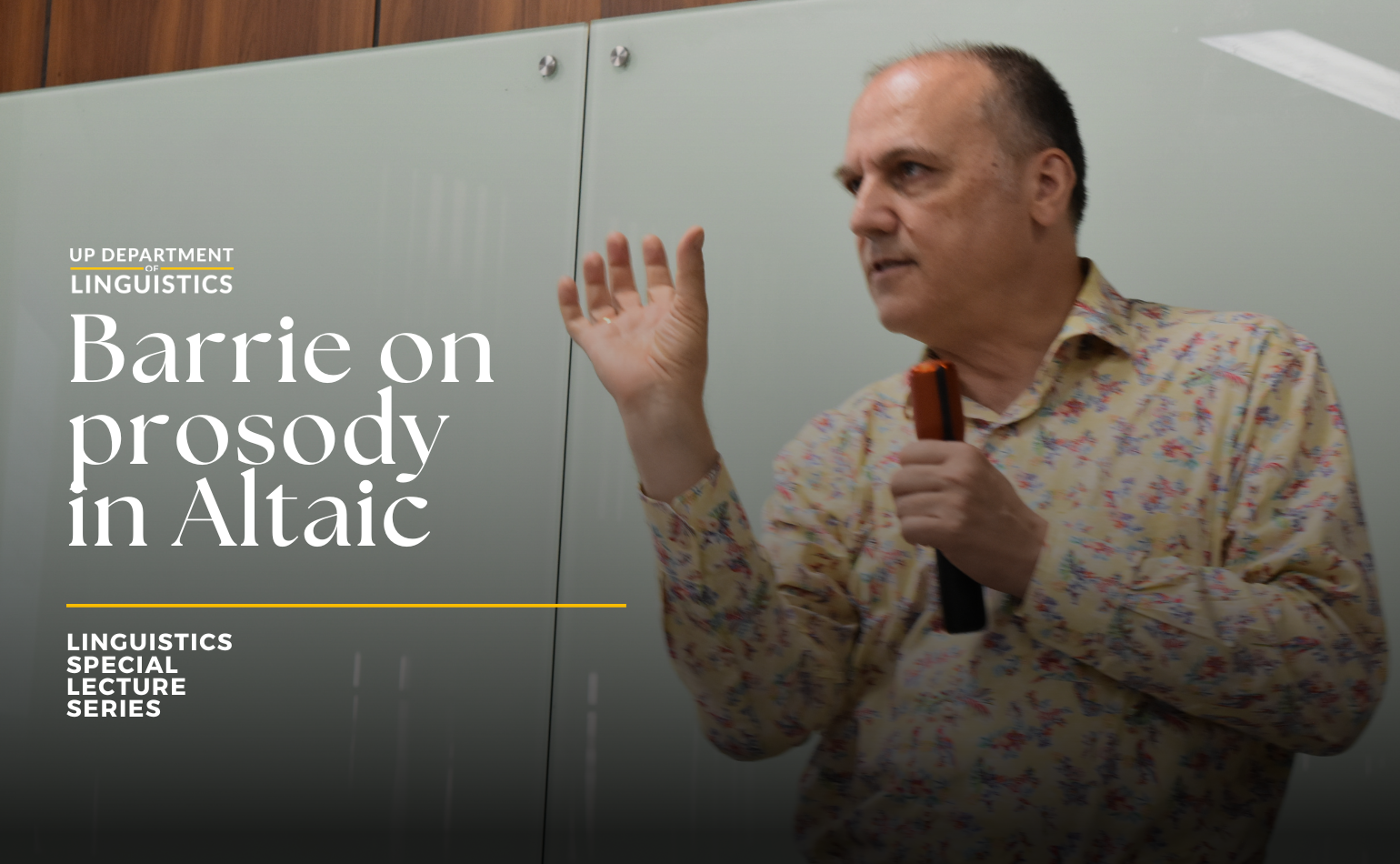
The book “Translation Studies in the Philippines: Navigating a Multilingual Archipelago,” co-edited by Dr. Mary Ann G. Bacolod and Dr. Riccardo Moratto (Shanghai International Studies University), has just been published by Routledge under their Advances in Translation and Interpreting Studies series.
The book, which examines “the state, development, issues, practices, and approaches to translation studies in the Philippines,” includes chapters written by several members of the UP faculty.
In the introduction to the book, Dr. Bacolod and Dr. Moratto discuss the significant role that translation plays in a country as linguistically diverse as the Philippines, particularly in broadly disseminating knowledge and information vital for the development of various sectors of its society. They also underscore the significance of translation in diverse fields, as indicated by the wide range of topics discussed in the individual chapters included in the book.
The first chapter of the book, titled “A Concise History of Translation in the Philippines” is co-authored by PhD Ling student Naidyl Isis Bautista and Dr. Anna Marie Sibayan-Sarmiento of the UP Department of European Languages (DEL). They provide a brief overview of the practice of translation within the archipelago from the pre-Hispanic period to the present, and discuss the changing motivations behind translation work in the country, as well as the advancements in and challenges to field.
Dr. Marlon James Sales (DEL) writes about the current state of translation and interpretation education in the Philippines in his chapter titled “Translation and Interpreting Education in the Philippines: A Preliminary Country Profile.” He identifies several strengths and weaknesses of translation and interpretation in the country that could inform how these fields could be professionalized.
In the third chapter of the book titled “Performing Disappearance and Resurfacing: Viewing the World through Theater Translation in the Academe,” Dr. Vladimier Gonzalez (UP Departamento ng Filipino at Panitikan ng Pilipinas) frames the act of translating theater plays as a “performance” that go beyond the translation of the text itself and encompasses “surrounding relationships, actions, imbalances and insights” involved in staging translated plays.
Michael Manahan writes about how spatial and temporal constraints in creating translated subtitles for audiovisual media impact linguistic choices of translators, including their choice of register, colloquial expressions, and orthographic variations. He ends his chapter titled “Beyond Constraints: Advancing Linguistic Consensus in Filipino Subtitling” with some recommendations on how we might effectively translate to Filipino linguistic and cultural subtleties via subtitles on audiovisual media.
PhD Candidate Honeylet Dumoran similarly looks at translation in audiovisual media, but specifically content meant for young audiences, in her chapter titled “Necessary Infidelity: Obligatory Shifts in Translating Audiovisual Texts for Children.” She identifies common translation techniques employed in translating texts in this type of media and the objectives behind these shifts.
In the chapter titled “Gender Bias in Machine Translation: The Case of Filipino-English Translation in Google Translate,” assistant professors Divine Angeli Endriga and Francisco Rosario, Jr. investigate “concerns over how the popular machine translation tool perpetuates gender bias and stereotypical notions of masculinity and femininity” using a corpus comprised of Filipino tabloid newspaper articles, comics, and formulated context-free texts which they ran through Google Translate’s Filipino-to-English translation.
Dr. Jem R. Javier and UP Department of Anthropology Assistant Professor Madilene Landicho, on the other hand, zoomed in on different versions of Filipino translations of Biblical passages, where they found “various mechanisms of expressing and euphemizing linguistic constructs related to sex, sexuality, and gender” in their chapter titled “The Biblical, the Moral, and the Legal: Juxtaposing Filipino/Tagalog Translations of Biblical Passages and Local Views on Sex, Gender, and Sexuality.” By investigating how these Biblical texts both shape and reflect gender, sex, and sexual relations among Filipinos, they reveal how Filipino subscribers of the faith negotiate their expression sexuality and performance of gender roles by combining guiding scripts in the Bible as well as local practices and beliefs in their local communities.
The translation issues in disaster communication is the central focus of Dr. Bacolod’s chapter titled “On the Translatability of Filipino Modals and Its Impact on Disaster Communication.” Using a collection of disaster-related texts in English and Filipino, the study examines “the functions and meanings of modals used to express possibility and obligation” in both languages to understand how these expressions facilitate the communicate the possibility of risk and inculcate a sense of urgency among their target audience.
Associate Professor Jesus Federico Hernandez‘s chapter titled “Lost for Words: The Untranslatability of Some Tagalog Words and Phrases” closes the book with an examination of so-called “untranslatable” Tagalog expressions and reflects on the notion of untranslatability and the factors which contribute to the untranslatability of expressions from one language to another.
Congratulations to all of our professors on this major publication which pushes forward the field of translation studies in the Philippines!
Translation Studies in the PhilippinesNavigating a Multilingual Archipelago
Edited by Ricardo Moratto and Mary Ann G. Bacolod
The contributors to this book examine the state, development, issues, practices, and approaches to translation studies in the Philippines.
The Philippines is a highly multilingual country, with many indigenous languages and regional dialects spoken alongside foreign imports, particularly English and Spanish. Professor Moratto, Professor Bacolod, and their contributors analyse the different roles that translation plays across an extensive range of areas, including disaster mitigation, crisis communication, gender bias, marginalization of Philippine languages, academe, and views on sex, gender, and sexuality. They look at a range of different types of translation, from the translation of biblical texts to audio-visual translation and machine translation. Emphasising the importance of translation as an interdisciplinary field, they use a variety of analytic lenses, including anthropological linguistics, language and culture studies, semantics, structural linguistics, and performance arts, among others.
A comprehensive resource for scholars and practitioners of translation, as well as a valuable reference for scholars across a wider range of humanities and social science disciplines in examining the culture, language, and society of the Philippines.
Published by UP Department of Linguistics



